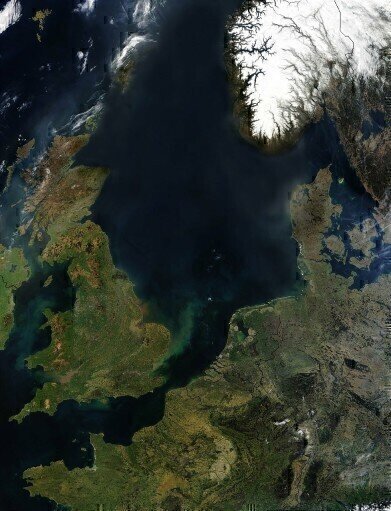Water/Wastewater
How Long Will It Be Until Parts of the UK Sink?
Nov 30 2017
Despite every country in the world (except the United States) signing up to the Paris agreement and pledging to limit global warming to less than 2°C, the current self-imposed targets are not sufficient to achieve that ultimate goal. Indeed, even if every country meets their own pledges, temperatures could still rise by 3°C by 2100.
Were such a temperature hike to occur, it would have irreversible consequences for sea levels all over the globe – including on home soil. The eastern county of Lincolnshire would be most susceptible to flooding, with the area from Hull down to Skegness and beyond vulnerable to sinking under the ocean’s surface.
Lincolnshire at high risk
The most recent National Flood Resilience Review, conducted in September 2016, labelled Lincolnshire as a “high risk” area and the Environment Agency urged residents to make themselves aware of how vulnerable their own home is.
Despite living many miles from the sea, houses even as far as 40 miles away can become waterlogged, as we learned in 2015/16's extreme flooding and in the colossal coastal flood in 2013. It’s estimated that as many 30,000 homes could be at risk from coastal flooding in the eastern county alone.
The UN has warned that the rate of current emissions means we are on course for a hike in global temperatures of as much as 3°C, which would have dire consequences for both Hull and Skegness. In a matter of decades, both localities could be buried under metres of water, thus displacing hundreds of thousands of homeowners and residents.
“Realignment” of the British map
An extreme method of mitigating coastal flood damage and rising sea levels is simply to cede territory to the ocean, using a form of managed retreat which the government prefer to call “realignment”.
This has already taken place in Alkborough Flats in 2015 and, less recently, in North Somercotes in 2009, when land previously reclaimed from the sea was converted back into salt marsh. Not only does this provide an extra defence against flooding, it also provides a new wildlife habitat and increases biodiversity.
Other measures taken to protect against flooding include the introduction of the alleviation reservoirs in Horncastle and Louth (similar to the Schlegeis reservoir in Zillertal), the replenishment of beaches with imported sand and a mixture of soft and hard defences along the coastline.
Far-reaching effects
While the most obvious consequences of rising sea levels will hit those who live on the coast, losing Lincolnshire land to the sea would have a nationwide impact, as well.
At present, almost 25% of all horticulture land in England is found in the county and it boasts an even higher percentage when it comes to beans, peas and vegetables. In the event of rising sea levels, a significant proportion of this would be lost to encroaching tides, while the food supplied by the UK fishing industry could also come under threat as fishing towns and villages are submerged.
While none of this is likely to take place for the next few decades, it’s imperative that we act now to prevent it coming about. If we don’t, it could be too late.
Digital Edition
IET 34.2 March 2024
April 2024
Gas Detection - Biogas batch fermentation system for laboratory use with automatic gas analysis in real time Water/Wastewater - Upcycling sensors for sustainable nature management - Prist...
View all digital editions
Events
Apr 22 2024 Hannover, Germany
Apr 22 2024 Marrakech, Morroco
Apr 23 2024 Kuala Lumpur, Malaysia
Apr 23 2024 Kintex, South Korea
Apr 23 2024 Edmonton, AB, Canada


















